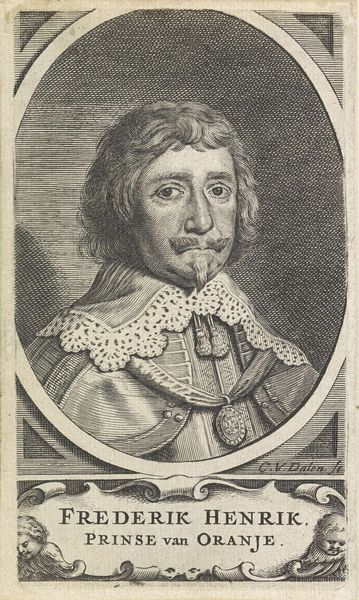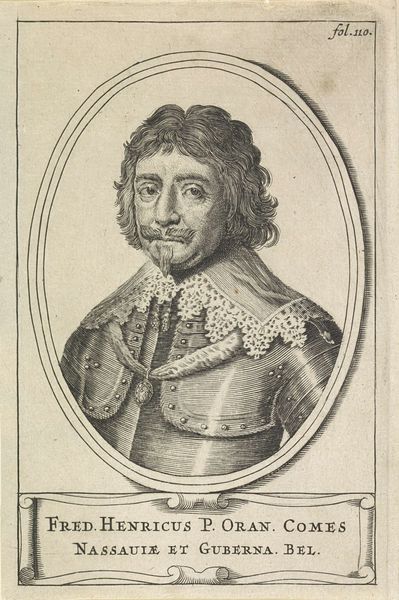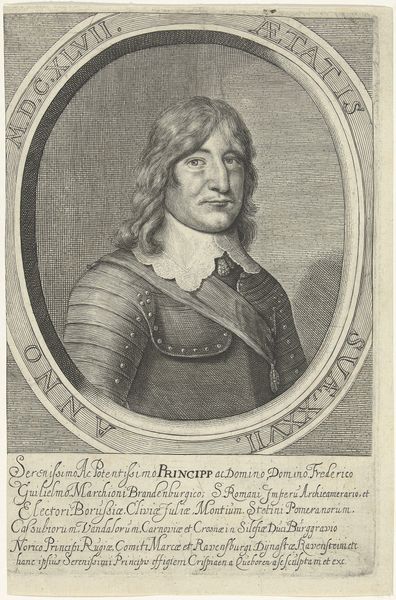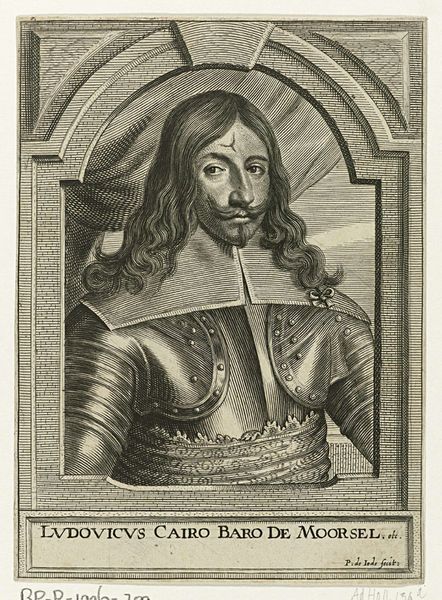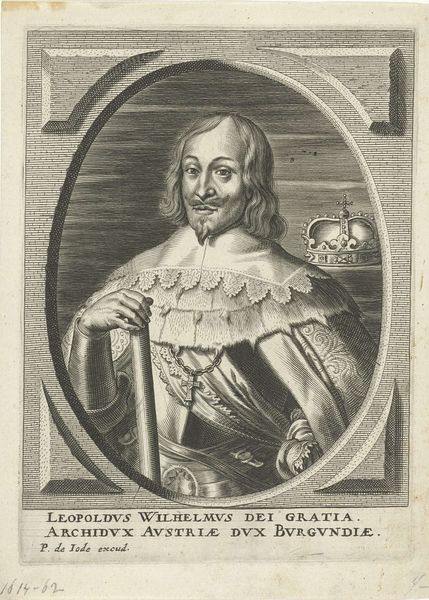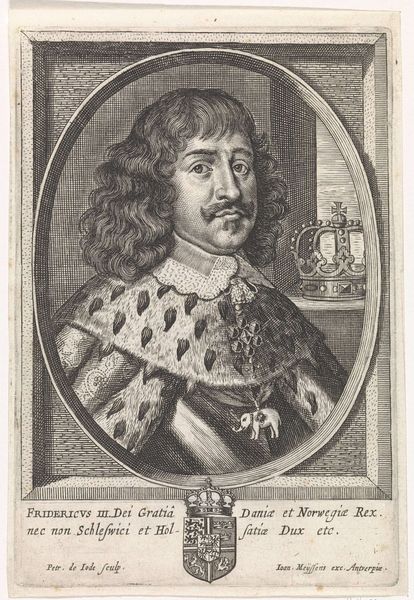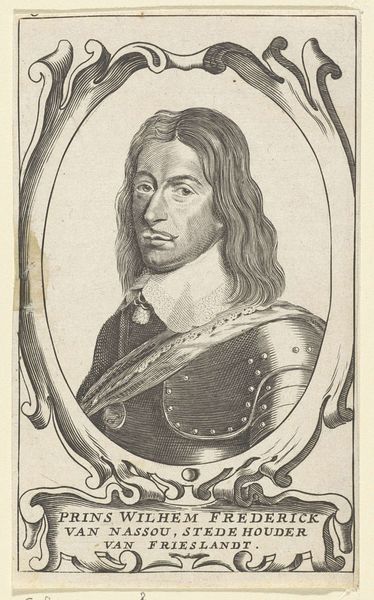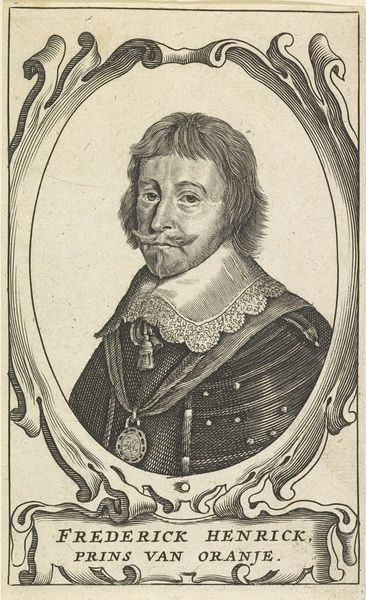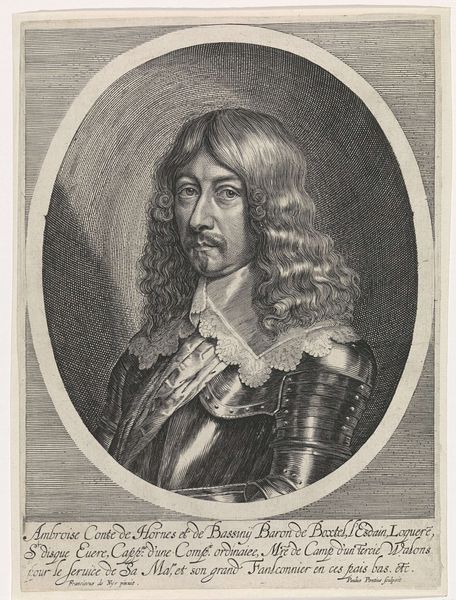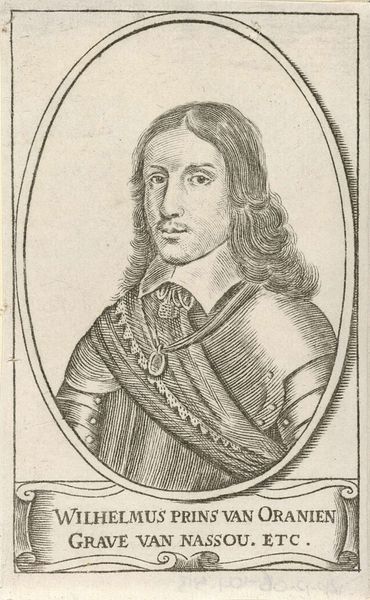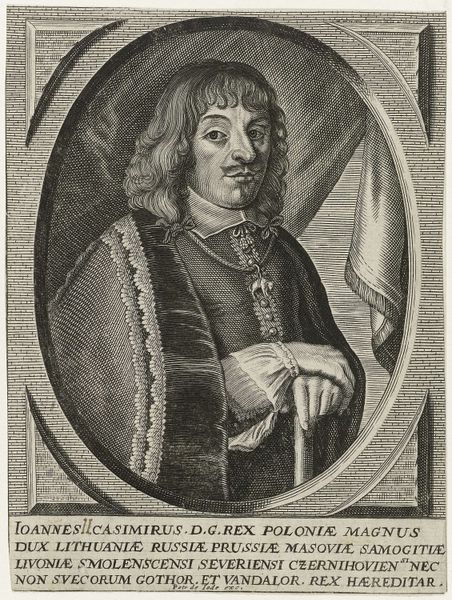
engraving
#
portrait
#
baroque
#
dutch-golden-age
#
old engraving style
#
pencil drawing
#
engraving
Dimensions: height 135 mm, width 82 mm
Copyright: Rijks Museum: Open Domain
Curator: Before us hangs a portrait of Hendrik Casimir I, Count of Nassau-Dietz, created anonymously sometime between 1630 and 1699. It is an engraving. What do you see in this piece? Editor: Immediately, a sense of austerity. The stark black and white, the tight framing... it conveys a certain seriousness. I’m struck by the ornamentation though. Even through the starkness, it’s all curves and embellishment, an oval frame decorated with flourishes, echoing the curls in his hair. Curator: Precisely! The composition relies on a fascinating dichotomy. Consider the sharp lines etched to depict his armor, contrasting against the softness implied by the lace collar and flowing hair. This is very much a Baroque idiom. Editor: The armor itself is a symbol, isn't it? Protection, authority, but also perhaps constraint. Is he defined by his role, encased within its demands? Curator: Iconographically, the armor acts as more than a simple signifier of protection. During the Dutch Golden Age, it evoked strength and resolve amid ongoing conflict, a crucial attribute for leadership. Notice how the face is very smooth, while the suit of armor looks rugged, an intentional interplay to suggest two different sides to Hendrik. Editor: I see that ruggedness mirrored, actually, in the frame surrounding him. The ornamentation almost looks organic, like tangled branches—perhaps hinting at the complexities of leadership, of navigating the political landscape. The fact that it's printed lends to that rigidness in interpretation. The lack of dynamism leads it to being an almost purely symbolic work. Curator: A shrewd observation. The engraving medium allows for sharp contrast, creating depth and highlighting texture with great efficiency and precision. And how the frame holds his name below almost to present it as fact. What lessons or insight do you extract as we prepare to move on? Editor: It is in fact these considerations around presentation. Framing isn't just about composition, it's about contextualizing meaning—the boundaries within which we understand a subject and in this case, a historical persona. Curator: Yes, for me, it is in understanding that within those limitations, we often unveil its unique artistic innovations in portraying character. Thank you for your insights.
Comments
No comments
Be the first to comment and join the conversation on the ultimate creative platform.
